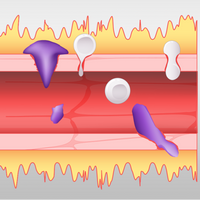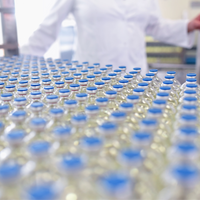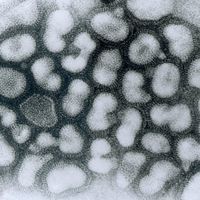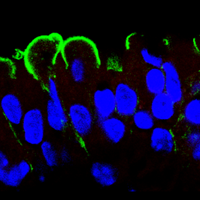Login
Subscribecytokines

The Brain’s Immune Cells Stand Sentinel Against Viral Invasion
Ashley Yeager | Oct 1, 2020 | 4 min read
Some viruses, possibly even SARS-CoV-2, can sneak into the brain through the nose. Recent studies show that microglia are ready for them when they do.

Infographic: How Cytokines Flow into and out of the Brain
Ashley Yeager | Oct 1, 2020 | 2 min read
Several routes exist for immune cells to communicate with neurons in the central nervous system, though T cells rarely come in direct contact with neural tissue.

Boosting CAR T Cell Therapy for Solid Tumors
The Scientist Creative Services Team in Collaboration with IsoPlexis | 1 min read
Katie McKenna will discuss how oncolytic viral therapy enhances CAR-T cell killing of cancer cells.

The Immune Hallmarks of Severe COVID-19
Katarina Zimmer | Sep 16, 2020 | 10+ min read
Researchers are trying to make sense of immune systems gone haywire and develop biomarkers to predict who will become the sickest from a coronavirus infection.

Immune Cell and Its Cytokine Control Exploratory Behavior in Mice
Ashley Yeager | Sep 14, 2020 | 5 min read
Gamma delta T cells in the meninges of the brain release a cell signaling molecule that does more than protect mice from microbial pathogens.

Cancer Vaccines: Raising a T Cell Army
Niki Spahich, PhD | 1 min read
Vaccines against various forms of cancer prime the immune system to attack.

Blood Replacement Rescues Mice from Stroke Damage
Amanda Heidt | Aug 31, 2020 | 5 min read
When mice that had suffered a stroke were given blood from a healthy donor, they experienced less tissue and neurological damage.

Is a Bradykinin Storm Brewing in COVID-19?
Alakananda Dasgupta | Aug 26, 2020 | 5 min read
Excess of the inflammatory molecule bradykinin may explain the fluid build-up in the lungs of patients with coronavirus infections. Clinical trials of inhibitors are putting this hypothesis to the test.

Performing Metabolomic and Functional Proteomic Analyses on a Heterogenous Cancer Cell Population
The Scientist Creative Services Team in Collaboration with IsoPlexis | 2 min read
A tumor metabolome panel identifies altered cell states that lead to drug tolerance.

Infographic: SARS-CoV-2 Interferes with Bradykinin Regulation
Alakananda Dasgupta | Aug 26, 2020 | 1 min read
The leaky blood vessels and lung fluid build-up in some COVID-19 patients might be explained by the virus’s corruption of an inflammation safeguard.

Immune Biomarkers Tied to Severe COVID-19: Study
Ruth Williams | Aug 19, 2020 | 4 min read
Increases in the levels of three cytokines are among the features linked to poor outcomes.

p53 as an Immune System Modulator in Cancer
The Scientist | 1 min read
Best known as a cell cycle regulator, p53 signaling mediates pro and anti-cancer immune responses as well

Seeking an Early COVID-19 Drug, Researchers Look to Interferons
Alakananda Dasgupta | Jul 20, 2020 | 9 min read
These antiviral proteins are produced by the body as a natural defense against viral infections and synthetic interferons might help prevent or treat the beginning stages of SARS-CoV-2 infection.

Could Statins Reduce the Severity of COVID-19?
Ashley Yeager | Jun 12, 2020 | 7 min read
The cholesterol-lowering drugs quell inflammation and reverse endothelial tissue damage, hints that they might curb the body’s excessive immune response to SARS-CoV-2 infection.

Could Curbing Runaway Immune Responses Treat COVID-19?
Shawna Williams | Apr 21, 2020 | 5 min read
Drugs targeting patients’ immune systems, rather than the virus itself, could be key to recovery from severe cases of the disease, some researchers suggest.

Discovered: Metabolic Mechanism of Cytokine Storms
Ruth Williams | Apr 15, 2020 | 3 min read
By studying influenza in mice and cells, researchers identify a glucose metabolism pathway critical to the dysregulated immune response that kills many infectious disease patients, including those with COVID-19.

Scientists Criticize Mouse Study of New Alzheimer’s Drug
Emily Makowski | Nov 13, 2019 | 3 min read
Oligomannate, recently approved in China, is being met with some skepticism from researchers.

Image of the Day: Resilient Lung Cells
Nicoletta Lanese | Aug 1, 2019 | 1 min read
A specific type of lung cell withstands flu infection by doubling down on DNA repair.

Drug for Still’s Disease Shows Promise in Phase 2 Trial
Shawna Williams | Mar 1, 2018 | 4 min read
Patients with the rare autoimmune condition, highlighted in the Oscar-nominated film The Big Sick, currently have limited treatment options.
